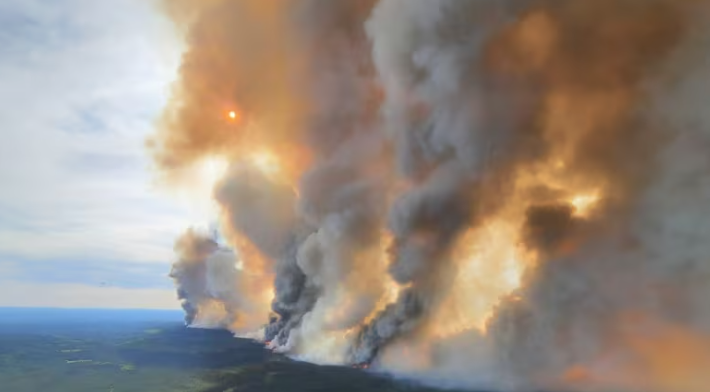Donnie Creek wildfire in northeast B.C. now the largest recorded in province’s history

Blaze remains out of control, 2023 season now 3rd worst on record
The Donnie Creek wildfire in northeastern British Columbia has now surpassed the 2017 Plateau fire as the largest individual fire, by area burned, ever recorded in the province’s history.
It was sparked on May 12 by lightning, according to the B.C. Wildfire Service (BCWS), and covers an area of 5,343.88 square kilometres as of 10 a.m. PT on Sunday. It is still not responding to suppression efforts and remains out of control, according to the BCWS.
Before this year — which has seen an unusually early start to fire season — the largest single fire was the 2017 Plateau fire near Williams Lake, an amalgamation of several smaller fires that burned a total of 5,210 square kilometres.
The wildfire is burning 136 kilometres southeast of Fort Nelson, and 158 kilometres north of Fort St. John, in the province’s Peace River region.
BCWS fire information officer Marg Drysdale said the blaze was “extremely active” on Sunday and that in some pockets, the fire was so aggressive it was burning the tops of trees — what is called “crown fire” behaviour.
“We have cooler conditions today,” she said on Sunday morning. “But this fire is so large that there’s different weather patterns and different weather conditions on different parts of the fire.”
Drysdale said that if the 948-kilometre-long perimeter of the fire was stretched out, it would go from Fort St. John in northeast B.C. all the way to Kamloops in the Central Interior.
While the blaze isn’t burning near major population centres, it has resulted in evacuation orders for a sparsely populated region primarily used by the forestry and oil and gas industries.
It was burning two kilometres away from the critical Alaska Highway route at a point north of Trutch, B.C. Evacuation orders and alerts are in place for a 160-kilometre stretch of the road.
“Our objectives are to protect and keep the Alaska Highway open because we understand what an important corridor that is for many people,” Drysdale said.
Crews conducted planned ignitions around the perimeter of the fire, near the highway, on Friday. The BCWS says the fire perimeter is currently holding at that spot, but warmer weather conditions are expected to return on Thursday.
Related News
Trade war, slumping border traffic: What does that mean for the Gordie Howe bridge?
Amid U.S. President Donald Trump’s tariffs which have triggered a trade war with Canada, cross-border trips haveRead more
Trump administration threatens Harvard’s foreign enrolment, tax-exempt status
U.S. Homeland Security Secretary Kristi Noem speaks during an event on April 9, in Washington,Read more
